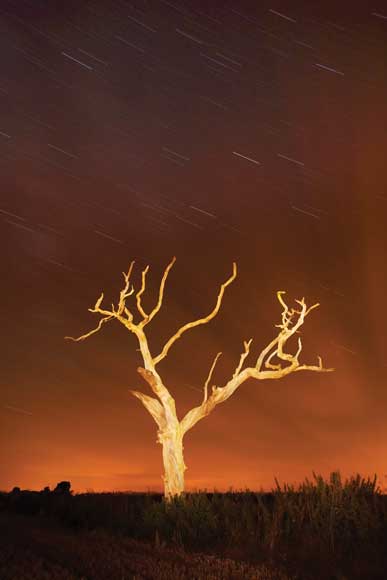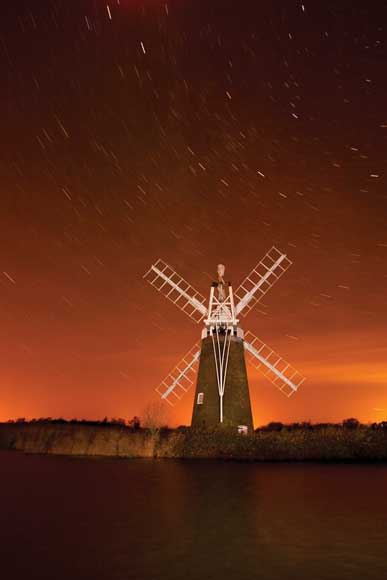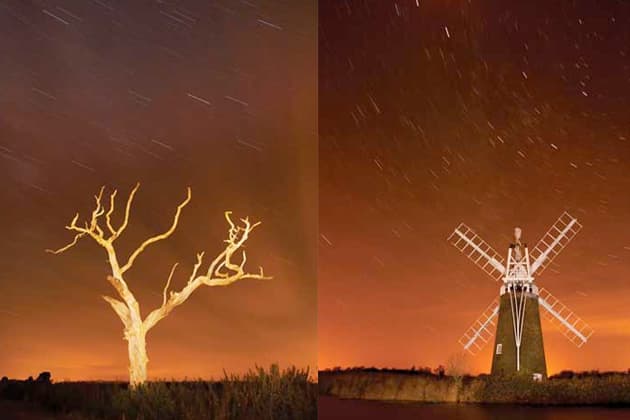Photographing Star Trails

I’ve photographed this tree many times and it’s one I find works just as well at night as in the day.’ 7mins @ f/7, ISO 100.
Star trail images are always eye-catching, but just like photographing images in the day we need to find a good subject and a good composition.
While pictures of a night sky alone will result in good star trails, they will rarely work well if there is no subject matter to the image.
For stunning images try locating the North Star in your composition, because as the earth rotates the North Star will appear to remain fixed while the other stars appear to spin around it. During long exposures we are able to record the motion of these stars in our images.
Skies must be clear for capturing star trails, so avoid any nights when there is a chance of clouds blowing in.
Exposures for star trails can range from several minutes to several hours. The overall exposure length will depend on the amount of motion you wish to capture.
One of the major problems with digital cameras during long exposures is that they are power hungry. With this in mind I normally limit my exposures to less than an hour unless I am using a battery grip with the facility to hold more than one battery at a time.
Chris’s Tips for Photographing Star Trails

Turf Fen Drainage Mill, Norfolk Broads – ‘A night when the moon had not yet risen allowed the sky to take on a warm colour due to light from nearby Norwich.’ 8mins @ f/8, ISO 200.
Clear Skies
Clear skies are essential for photographing star trails so avoid nights when there is a chance of thick cloud blowing in during the long exposure.
North Star
By including the North Star in the composition you can capture the appearance of the other stars rotating around it.
Light Pollution
By shooting into the direction of the North Sea you can eradicate any potential problems of light pollution from built up areas.
Low Viewpoint
If you adopt a low viewpoint you can exclude elements such as cars from the composition, for more emphasis on the sky.
by Christopher Herring







